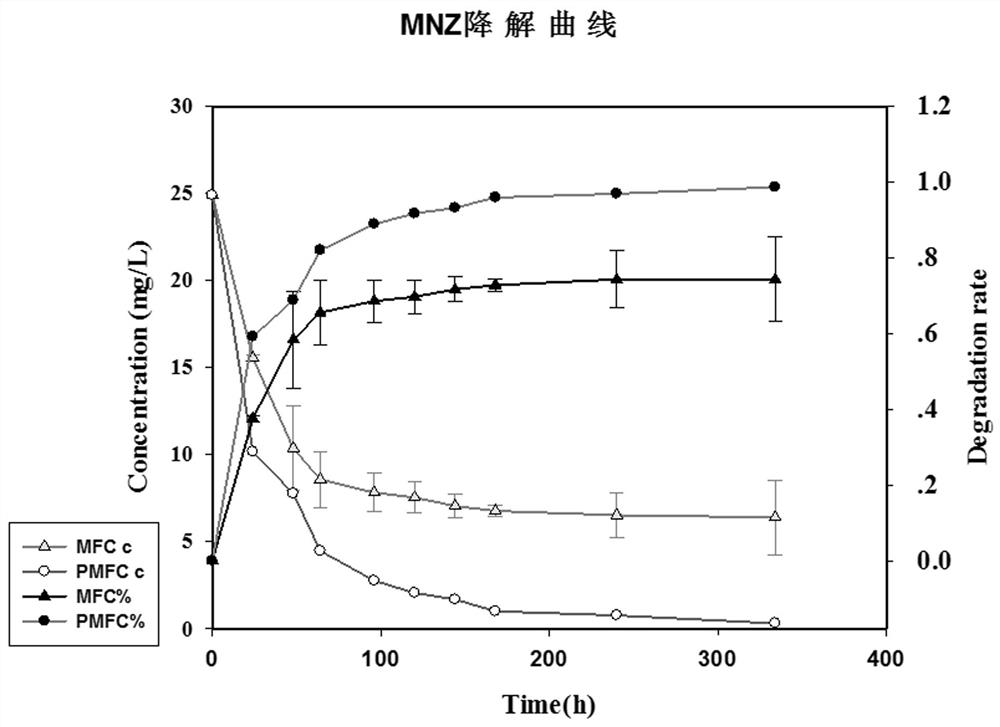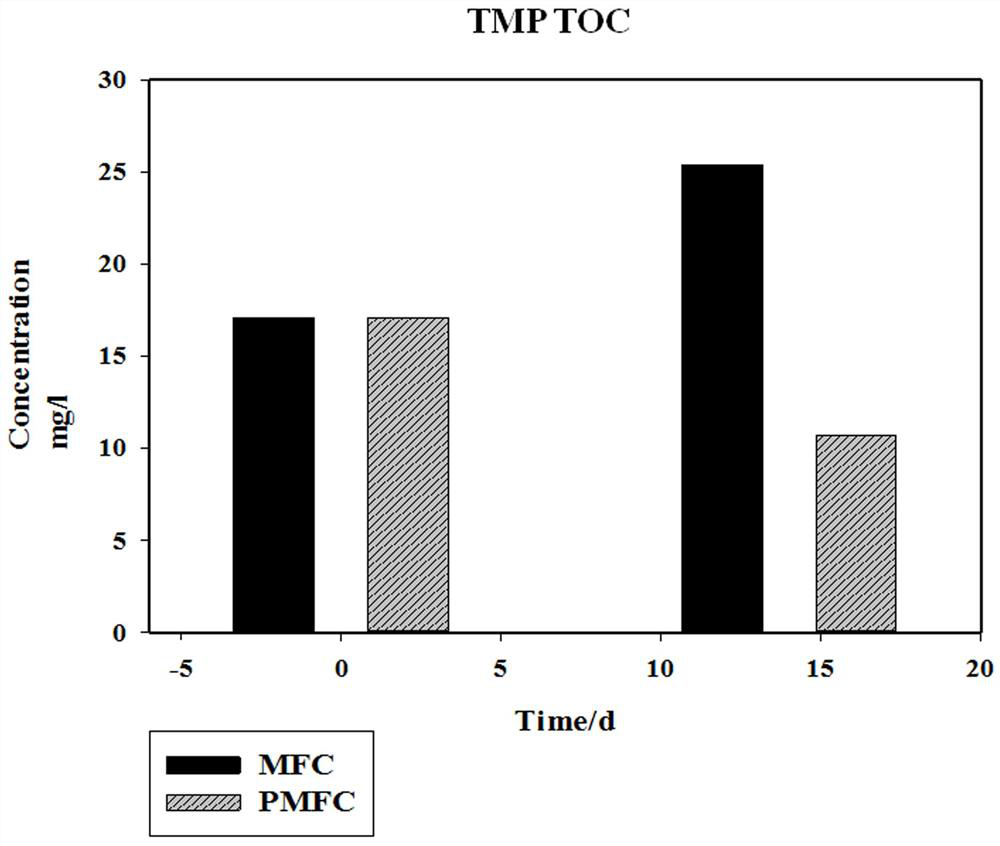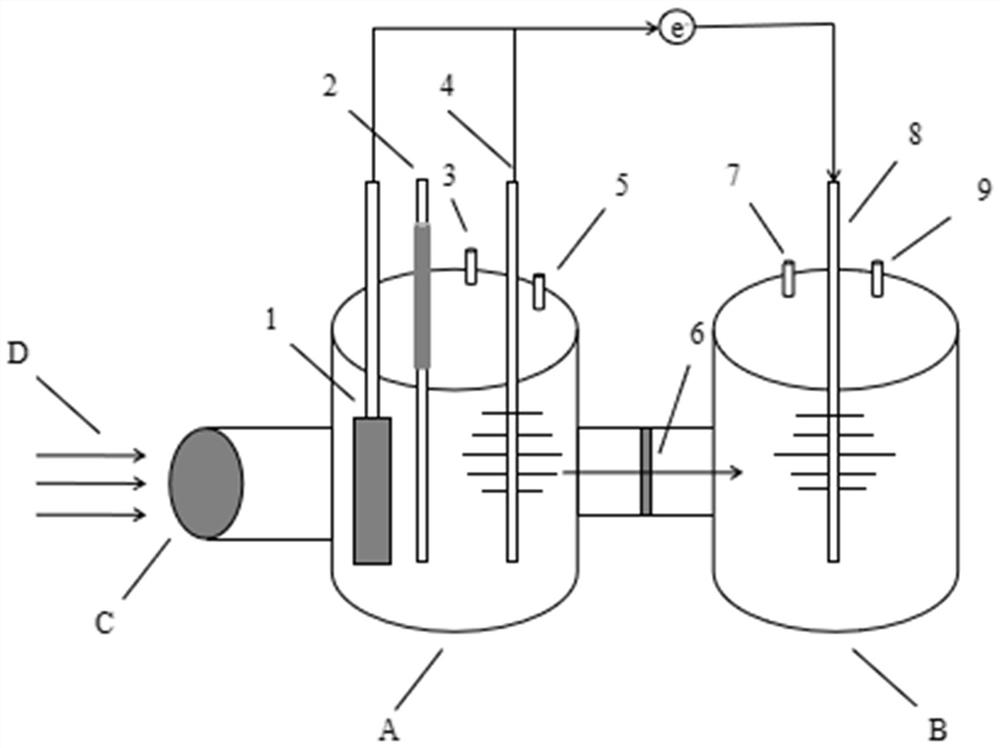Device for degrading antibiotics by adopting photocatalysis-assisted enhanced biological anode
A bioanode and photocatalysis technology, applied in the fields of pollutant treatment and energy utilization, can solve the problems of low electricity production of microbial fuel cells and inability to fully utilize the energy of antibiotic pollutants, so as to increase electricity production, increase electricity production, and improve degradation efficiency effect
- Summary
- Abstract
- Description
- Claims
- Application Information
AI Technical Summary
Problems solved by technology
Method used
Image
Examples
Embodiment Construction
[0019] During specific implementation, metronidazole and trimethoprim can be selected as broad-spectrum antibiotics.
[0020] The following steps 1-5 are the preparation method of the device of the present invention, and steps 6 and 7 are the preparatory work of the present invention before the actual degradation of antibiotics.
[0021] 1. Preparation of hydrothermal TiO 2 Photocatalytic mesh material (TiO 2 photocatalytic material. First, slowly drop the mixture of 5 mL of tetrabutyl titanate and 5 mL of absolute ethanol into the mixture of 20 mL of absolute ethanol, 5 mL of distilled water and 1 mL of concentrated nitric acid under vigorous stirring. After the dropwise reaction was complete, the stirring was continued for 1 h to obtain light yellow transparent TiO 2 Sol. Then, inject 30 mL of the sol into the autoclave. Under the condition of hydrothermal temperature of 160 ℃, reacted for 6 h to obtain paste TiO 2 , and then in paste TiO 2 Add 5 mL of distilled wa...
PUM
| Property | Measurement | Unit |
|---|---|---|
| length | aaaaa | aaaaa |
| diameter | aaaaa | aaaaa |
| length | aaaaa | aaaaa |
Abstract
Description
Claims
Application Information
 Login to View More
Login to View More - R&D
- Intellectual Property
- Life Sciences
- Materials
- Tech Scout
- Unparalleled Data Quality
- Higher Quality Content
- 60% Fewer Hallucinations
Browse by: Latest US Patents, China's latest patents, Technical Efficacy Thesaurus, Application Domain, Technology Topic, Popular Technical Reports.
© 2025 PatSnap. All rights reserved.Legal|Privacy policy|Modern Slavery Act Transparency Statement|Sitemap|About US| Contact US: help@patsnap.com



